This article on German Shepherds is part of a series to highlight the Big Picture of health, welfare and breeding and to help develop Globally Relevant Integrated Health Profiles (GRIHPs) for many breeds. See IPFD's Get a GRIHP! on Breed Health Initiative
This is a 'living document' - so if anyone has more material to share or point us to - please let us know!

Photo: Freepik
The German Shepherd at a Glance
The German Shepherd is the most known and popular breed in the world. The breed has been bred with the ultimate objective of creating a working dog inclined to high achievements.
The German Shepherd Dog must be well-balanced (with strong nerves) in terms of character, self-assured, absolutely natural and (except for a stimulated situation) good-natured as well as attentive and willing to please. He must possess instinctive behavior, resilience and self-assurance in order to be suitable as a companion, guard, protection, service and herding dog. (source: FCI breed standard)
German Shepherds are widely used in police, military, and search and rescue work. They are also kept as family pets and used in competitive protection and other hobbies.
The breed is divided into two genetically different lines: a working line focusing on competition and working dogs, and a show line focusing on appearance and dog shows. The division of the lines started in the former West Germany in the 1960s, and since the 1980s, there has been little mixing of the lines in Germany. In other countries, mixed-line dogs also exist, having both show and working dogs in the pedigrees.
The German Shepherd comes with two coat variants: the short-haired and the long-haired. The long-haired variant was approved in 2009 and is therefore still new to the breed, although long hair has existed within the breed throughout the ages.
What Do Caretakers Need to Know?
As very strong and active dogs, German Shepherds need good training and handling.
Key Hereditary Health Conditions
The major hereditary problems in the German Shepherd are immunological diseases and various skeletal diseases. The most common immunological diseases are atopy and allergies, pancreatic insufficiency, various tumours, pannus (pannus keratitis), and perianal fistula. The most common skeletal diseases are hip and elbow dysplasia. Also worth mentioning are spinal problems, growth disorders of the stifle and shoulder, gastric torsion, and heart disease. (Source: breeding strategy of the Finnish breed club)
Disorder prevalence in UK German Shepherd Dogs by VetCompass Interactive Resources:
-
Hip and elbow dysplasia
-
Immunological eye diseases; plasmoma and keratitis
-
Spinal and skeletal issues; lumbosacral transitional vertebrae, spondylosis and narrowing of the posterior spinal canal
-
Orthopedic; osteochondrosis in shoulders
-
Degenerative myelopathy (DNA test available)
-
Allergies and atopies
-
Exocrine Pancreatic Insufficiency (EPI)
-
Perianal fistulas (anal furunculosis)
Physical Exaggerations – Instructions for Conformation Judges
Breed-Specific Instructions of the Nordic Kennel Union
FCI GROUP 1 – Sheepdogs and Cattledogs
Areas of risk are:
-
Hindquarters: Over-angulated and cow hocked hindquarters with instability in hocks.
-
Top line: Arched and cut away in loin and croup.
Exaggeration in presentation with extreme handling precludes assessment of the demands of the standard: “the position of hind legs is slightly backwards whereby the hind limbs are parallel to each other when seen from the rear”. Evaluation of the movement should be made at both trot and walk.
Read more here >>
Breed Watch UK
Points of concern for special attention by judges:
-
Cow hocks
-
Excessive turn of stifle
-
Nervous temperament
-
Sickle hock
-
Weak hindquarters
Read more here >>
Statistics (Morbidity and Mortality)
Agria - Swedish Breed Profiles
We recommend that you download the Agria Breed Profiles for the German Shepherd and study them for full available information. Some excerpts are shown below.
Download Profiles for 2006 – 2011 | Download Profiles for 2011 – 2016 | Download Profiles for 2016 – 2021
(Access is free, but sign-in to DogWellNet is required).
The great benefits of the Swedish Insurance Data are that they include almost 40% of the national population of dogs, and so are very representative. Note that animals at very old ages are likely under-represented. Most importantly, information is available on all insured dogs, not simply those who get sick or die.
Extracts from Veterinary Care Events – MORBIDITY
Relative risk of morbidity in German Shepherds compared to all breeds (Chart 1): 1.2 (The risk in the breed is larger than for All Breeds)
Most frequent general causes (Chart 3): locomotor, digestive, skin, injury, neoplasia
Most frequent specific causes (Chart 5): vomiting/diarrea/gastroenteritis, pain/symptom locomotor, dermatitis/pyoderma/folliculitis, otitis, itching, skin trauma, teeth, skin tumour, allergy/atopy
Largest relative risks (specific causes) compared to All Breeds (Chart 6 – not included here):
-
exocrine pancreatic insufficiency >11 x,
-
panosteitis >9 x,
-
intestinal accident spleen >4 x, and
-
upper urinary tumour >4 x the risk in All Breeds.
Locomotor compared to All Breeds (Chart 10):
-
skeletal 4 x,
-
elbow 3 x,
-
hip/femur/pelvis 2,5 x, and
-
carpal/metacarpal >2 x the risk in All Breeds.
More Info
UK VetCompass: Most frequent disorders

Extracts from Agria Breed Profile (Life) – MORTALITY
Median Age (years) at death: 6.7, which is a little lower than in All Breeds (6.9).
Relative Risk Mortality compared to All Breeds (Chart 1): 1.93. (The risk in the breed is almost twice the risk in All Breeds).
Most frequent general causes of death (Chart 3): locomotor, neoplasia, digestive, dead/euthanized, neurological, skin. All are more common than in All Breeds.
Most frequent specific causes of death (Chart 5): dead/euthanized, disc/vertebral, hip dysplasia, intest accident, ataxia/paresis/paralysis/collapse, locomotor pain/symptom, neoplasia. All are more common than in All Breeds.
More Info
UK - VetCompass: Causes of death

Source: VetCompass Interactive Resources - Disorder prevalence in UK German Shepherd Dogs
Finland – Finnish Kennel Club Mortality Data 2014->
The average life expectancy according to the Finnish statistics is 8 years 2 months.
The most common specified causes of death are
-
old age (at 11 years 10 months),
-
tumor/cancer (9 y 2 mo),
-
skeletal or articular disease (5 y and 8 mo), and
-
spinal disease (7 y 10 mo).

Source: Finnish Kennel Club breeding database
Life Expectancy
DNA Tests – Harmonization of Genetic Testing for Dogs
 The Harmonization of Genetic Testing for Dogs (HGTD) is a large collaboration project run by the IPFD. The HGTD includes 82 academic and commercial genetic test providers (GTPs) in 26 countries.
The Harmonization of Genetic Testing for Dogs (HGTD) is a large collaboration project run by the IPFD. The HGTD includes 82 academic and commercial genetic test providers (GTPs) in 26 countries.
Our searchable database currently holds information on 300+ conditions/traits across all breeds/types.
Breed Relevance Rating (BRR) indicates the level of available evidence supporting the application of a specific genetic test for a specific breed/type:
 Some, moderate or strong evidence from available research. The test may be meaningful or recommended for this breed.
Some, moderate or strong evidence from available research. The test may be meaningful or recommended for this breed.
 Currently no evidence of relevance for the use of this test in this breed, or the test is not known in this breed. This rating should be expected to change as evidence becomes available.
Currently no evidence of relevance for the use of this test in this breed, or the test is not known in this breed. This rating should be expected to change as evidence becomes available.
 All current available evidence has been reviewed, but relevance is inconclusive, and/or the clinical form of the disease has never been seen in this breed.
All current available evidence has been reviewed, but relevance is inconclusive, and/or the clinical form of the disease has never been seen in this breed.
 All current evidence indicates that the test is not meaningful or recommended in this breed.
All current evidence indicates that the test is not meaningful or recommended in this breed.
Click here for more information on the HGTD project
See the HGTD – DNA tests for the German Shepherd Double-coat here, and Long coat here.
Summary: German Shepherds have long been a popular breed, in turn making them one of the breeds with a larger selection of available genetic tests. There are two different recognised varieties: Double-coated, and Long and harsh coat. In some countries these populations have effectively not interbred for a long enough time that there are differences in recommended genetic tests. However, it may be prudent in pre-breeding applications to review the results for genetic tests offered to both varieties. Testing for Multidrug Resistance 1 (MDR1) is recommended for all german shepherd dogs, regarless of if they are being considered for breeding, due to the potential welfare/veterinary importance implications. The lists below reflect some of the breed-specific genetic tests with available research, divided by breed/variety. Please refer to the full information on HGTD for all available genetic tests, including those that may be relevant but do not currently have breed-specific research, as well as non-breed specific tests, or trait tests such as coat colour.
German Shepherd, Double coated
-
Multidrug Resistance 1 (MDR1)
-
2,8-Dihydroxyadenine Urinary Stones
-
Achromatopsia 2
-
Degenerative Myelopathy
-
Dwarfism, Pituitary
-
Factor VIII Deficiency
-
Hyperuricosuria and Hyperuricemia (HUU)
-
Ichthyosis, ASPRV1-related (specifically identified in the German Shepherd)
-
Leukocyte Adhesion Deficiency III (LAD3)
-
Mucopolysaccharidosis Type VII
-
Renal Cystadenocarcinoma and Nodular Dermatofibrosis
-
Scott Syndrome
-
Von Willebrand Disease I
-
X-linked Ectodermal Dysplasia
-
Achromatopsia (cone degeneration, hemeralopia), GSPT (might be important)
German Shepherd, Long and Harsh coat
-
Multidrug Resistance 1 (MDR1)
-
2,8-Dihydroxyadenine Urinary Stones
-
Dwarfism, Pituitary
-
Factor VIII Deficiency
-
Hyperuricosuria and Hyperuricemia (HUU)
-
Mucopolysaccharidosis Type VII
-
Renal Cystadenocarcinoma and Nodular Dermatofibrosis
-
Von Willebrand Disease I
-
X-linked Ectodermal Dysplasia
-
Leukocyte Adhesion Deficiency III (LAD3)
♦ BIG PICTURE THINKING ♦ Please take into consideration - Most of the conditions with genetic tests are rare in the general population, but valuable for breeders to use to efficiently reduce risks while supporting good genetic diversity in the breed as a whole. Also be aware that there are many DNA tests that are available for ALL breeds, and that while the test itself is valid, the condition may not be a major health concern or included in health strategies for every breed. See the HGTD for a full list of DNA tests including "Trait" and "Parentage" tests.
There are a number of tests available, particularly tests for traits such as coat color, or health issues that are applicable to all dogs and may be important to specific breeding lines or breeding goals. We welcome contributions from breed experts and researchers to help us keep our information up to date. Email us at info@ipdfogs.com
Health Screening Summary – By Country
(Source: Breeding Strategies, see below)
R1-Mandatory for registration
R2-Recommended
R3-Recognized
Note: Please let us know if there have been changes to the health screening requirements in your country, so we can update our data.
|
Condition/ Trait
|
GE
|
FI
|
FR
|
IT
|
NL
|
NO
|
SWE
|
UK
|
US
|
|
Correct dentition
|
R2
|
R2
|
R2
|
|
R2
|
|
|
|
|
|
Hip dysplasia
|
R1
|
R1
|
R2
|
R2
|
R2
|
R1
|
R2
|
R2
|
R1
|
|
Elbow dysplasia
|
R1
|
R1
|
R2
|
R2
|
R2
|
R2
|
R1
|
R2
|
R1
|
|
Eye disease/keratitis & plasmoma
|
|
R2
|
|
|
|
|
|
R2
|
R2
|
|
Spine
|
|
R1**
|
|
|
R2
|
R2
|
R2
|
|
|
|
Character/
mental test
|
R1*
|
R1
|
R2
|
R2
|
R2
|
|
R2
|
|
R1
|
|
DNA profile
|
R2
|
|
R2
|
|
|
|
|
|
|
|
Allergy, atopy
|
|
R2
|
|
|
|
R3
|
R2
|
|
|
|
Cardiac disease
|
|
|
|
|
|
|
|
|
R2
|
|
Thyroid test
|
|
|
|
|
|
|
|
|
R2
|
|
Megaesophagus
|
|
|
|
|
|
R3
|
|
|
R3
|
|
Exocrine pancreatic insufficiency
|
|
|
|
|
|
R3
|
|
|
R3
|
|
Bloat
|
|
|
|
|
|
|
|
|
R3
|
|
Epilepsy
|
|
|
|
|
R2
|
|
|
|
R3
|
|
Hemangiosarcoma
|
|
|
|
|
|
|
|
|
R3
|
|
Degerative myelopathy
|
|
R3
|
|
|
R2
|
|
|
R2
|
R2
|
|
Haemophilia
|
|
|
|
|
|
|
|
R2***
|
|
|
Max N of offspring
|
|
|
|
|
R2
|
|
|
|
|
|
Dwarfism
|
|
|
|
|
R2
|
|
|
|
|
*Evaluated in Talentsichtung, trials and Körung; **Screening for lumbosacral transitional vertebrae (LTV) is mandatory, for spondylosis recommended; ***Only for males
Note: The table above provides some of the most common health screening information from clubs in the countries listed. See the individual club websites for the most recent and accurate information on health management in the breed.
Breeding Strategies and Health Screening Statistics

Photo: Freepik
Germany
Health information/requirements by the breed clubs:
”The German Shepherd Association RSV2000 eV sees itself as the heir to the idea of its founder Max von Stephanitz: The German Shepherd Dog should be bred as a versatile working dog.” (Source: https://www.rsv2000.de/ueber-den-rsv2000/)
Breeding plan:

UK
Scandinavian countries
Percent healthy of the examined dogs (2013-2023):
-
Hip dysplasia: Finland 65 %, Norway 67 %, Sweden 74 %.
-
Elbow dysplasia: Finland 81 %, Norway 86 %, Sweden 83 %.
-
Eye diseases: Finland 78 %, Norway 58 %, Sweden 70 %.
Clinical findings listed in the Norwegian Kennel Club database (in Norwegian):

France
La Centrale Canine health statistics 2011-2020 document: During 2011-2020 the proportion of screened German Shepherds free of hip dysplasia has been 70-74%. However, there has been an increase in moderate and severe dysplasia (D and E) and a decrease of mild dysplasia (C). Proportion of screened dogs has been 10 %.

11 % of the screened dogs had elbow arthrosis (grades 1-3 elbow dysplasia) during 2011-2020:

The Netherlands
Breeding rules of the breed clubs:
Italy
US
OFA Statistics - % healthy of the examined dogs since 2021:
-
Hip dysplasia: 79%
-
Elbow dysplasia: 81%
-
Eye diseases: 95%
-
Cardiac (Advanced): 92%
-
Thyroid: 90 %
-
Degenerative myelopathy: 69%
Research
Ongoing research:
Royal Veterinary College: Understanding the genetics of Canine inflammatory bowel disease (IBD) in GSDs
Published research:
O’Neill, D.G., Coulson, N.R., Church, D.B. et al. Demography and disorders of German Shepherd Dogs under primary veterinary care in the UK. Canine Genet Epidemiol 4, 7 (2017). https://doi.org/10.1186/s40575-017-0046-4
The most frequent disorders in GSDs were otitis externa, osteoarthritis, diarrhoea, overweight/obesity and aggression, whilst the most common causes of death were musculoskeletal disorders and inability to stand. Aggression was more prevalent in males than in females.
Teng, K.Ty., Brodbelt, D.C., Pegram, C. et al. Life tables of annual life expectancy and mortality for companion dogs in the United Kingdom. Sci Rep 12, 6415 (2022). https://doi.org/10.1038/s41598-022-10341-6
Life tables varied widely between breeds. Life tables generated by the current study allow a deeper understanding of the varied life trajectory across many types of dogs and offer novel insights and applications to improve canine health and welfare. The current study helps promote further understanding of life expectancy, which will benefit pet owners and the veterinary profession, along with many other sectors.
Vilson Å, Bonnett B, Hansson-Hamlin H, Hedhammar Å. Disease patterns in 32,486 insured German shepherd dogs in Sweden: 1995-2006. Vet Rec. 2013 Aug 3;173(5):116. doi: 10.1136/vr.101577. https://pubmed.ncbi.nlm.nih.gov/23812178/
For veterinary care events (morbidity) GSDs were most over-represented for immunological disease, with a relative risk (RR) of 2.7, compared with the risk in all other breeds combined. The most common disease category (morbidity) in GSDs was skin disorders with an incidence rate of 346.8 cases per 10,000 dog years at risk. The highest RR for cause of death in GSDs compared with all other breeds was for skin conditions (RR=7.8). Locomotor disorders were the most common cause of death in GSDs. The GSD is predisposed to immune-related disorders, such as allergies, circumanal fistulae and exocrine pancreatic atrophy, with significantly increased risk compared with all other breeds.
Vilson 2016. Immunity, Microbiota & Immune-related Disorders in German Shepherd dogs. Doctoral Thesis, Swedish University of Agricultural Sciences, Uppsala. https://pub.epsilon.slu.se/13768/1/vilson_a_161028.pdf
In an epidemiological study based on insurance data we described a breed-specific pattern of diseases in German Shepherd dogs (GSD) and confirmed that this breed is predisposed to immune-related disorders. A prospective study was performed in order to further investigate immunological changes in the GSD using a large number of dogs, 30 bitches and their litters, from the same kennel under well controlled natural conditions.
Bergevi 2022. Mapping of allergic dermatitis in the Swedish Armed Forces’ German Shepherd dogs – Analysis of early skin assessments from a breeding perspective (In Swedish, with an English abstract). Master’s Thesis, Swedish University of Agricultural Sciences, Uppsala. https://stud.epsilon.slu.se/17774/1/Bergevi_F_20220523.pdf
The results indicate that genetic progress in decreasing allergic dermatitis is possible by including the early skin assessments at FM’s [The Swedish Armed Forces] selection, preferably as breeding values for skin status, which is important since breeding females are selected at the age of 15 months.
References and Resources
Breed Clubs
Germany
Both clubs have open studbook, ie. breed-typical dogs without pedigrees can get an appendix pedigree.
Finland
France
Italy
The Netherlands
Norway
Sweden
US
UK
IPFD/DogWellNet Resources for the German Shepherd
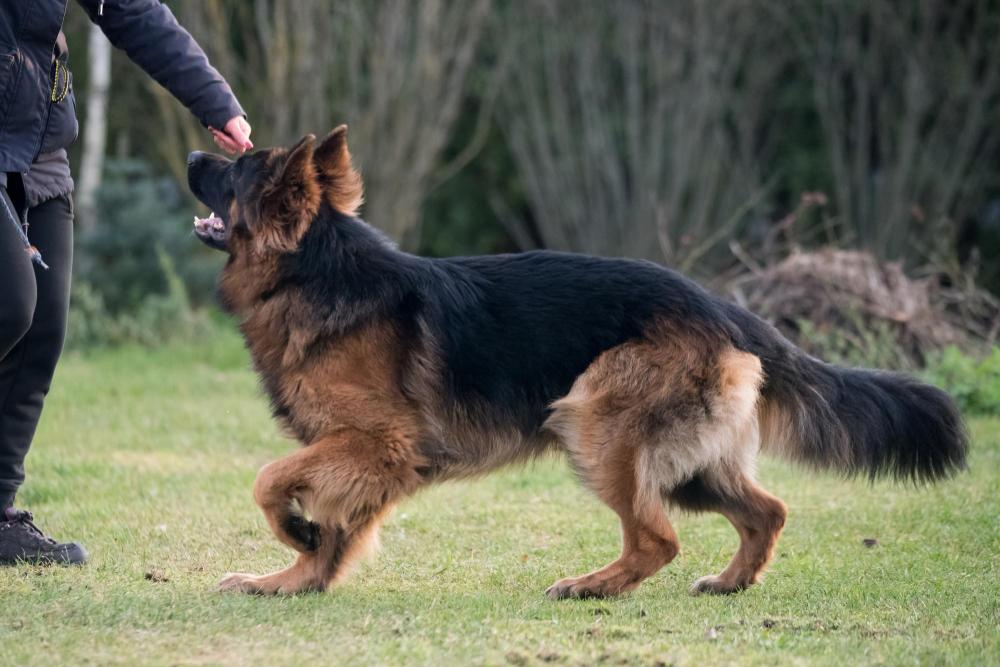
 Donate
Donate
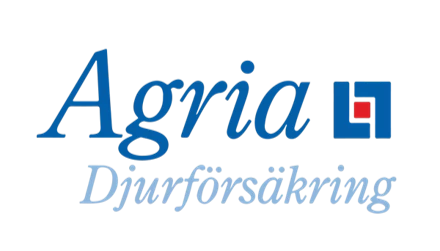
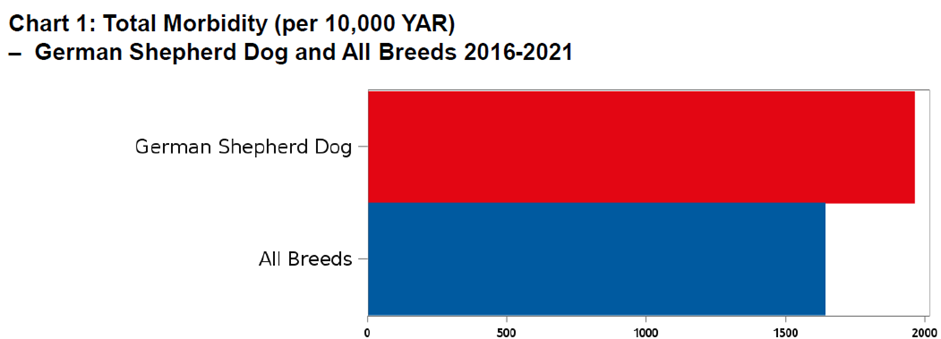


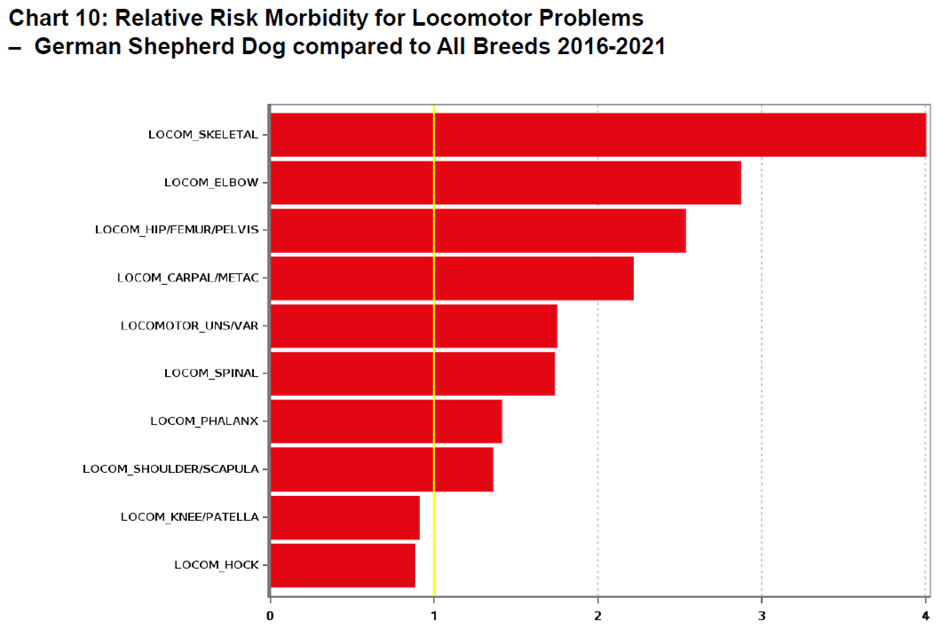
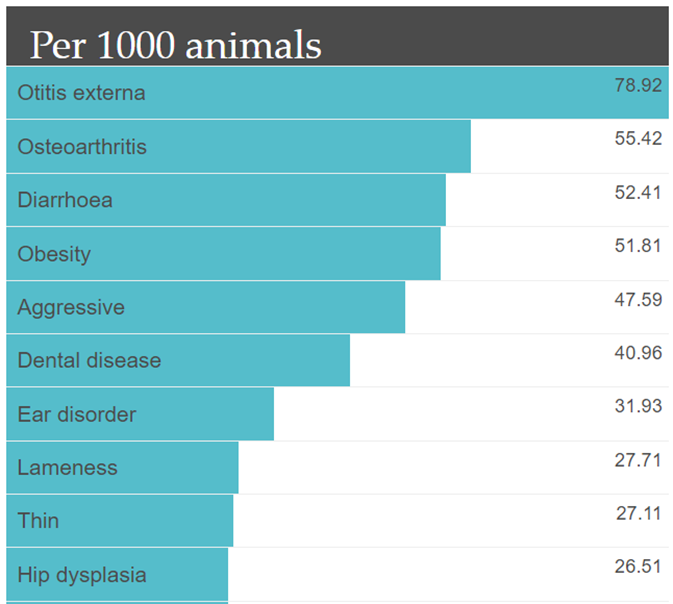
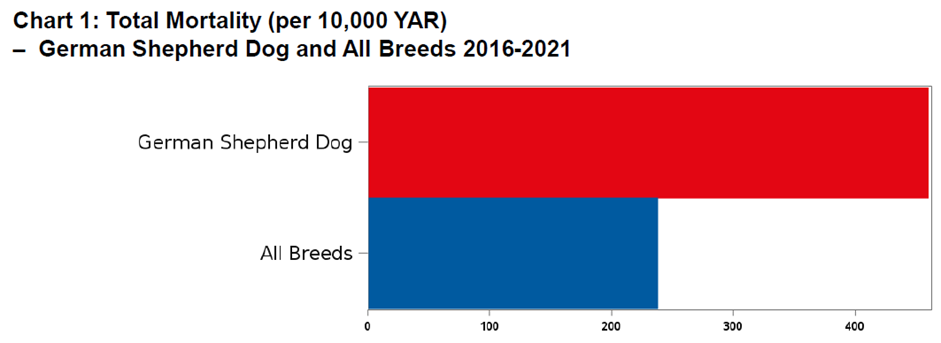
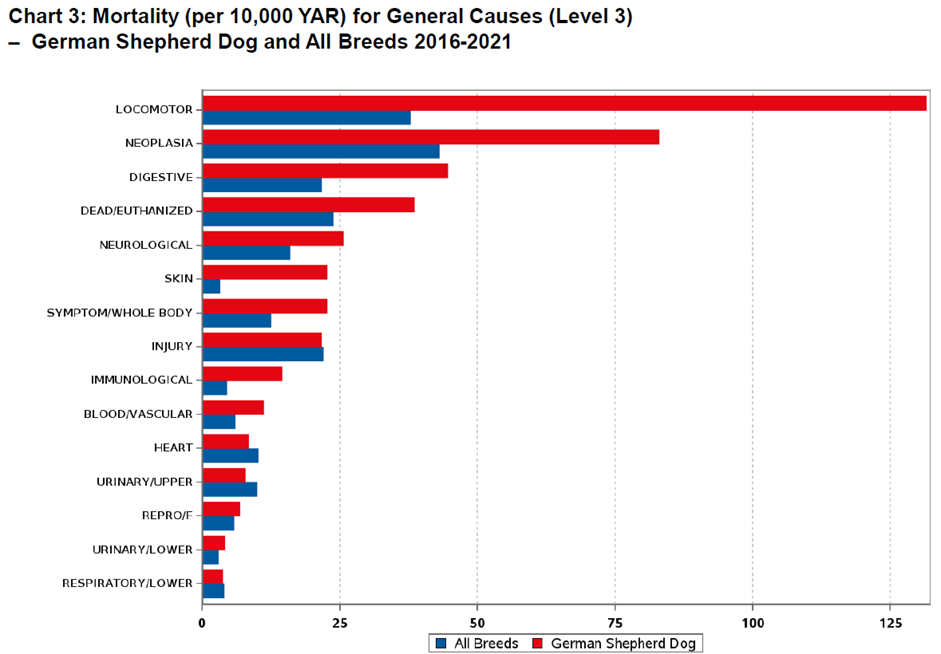
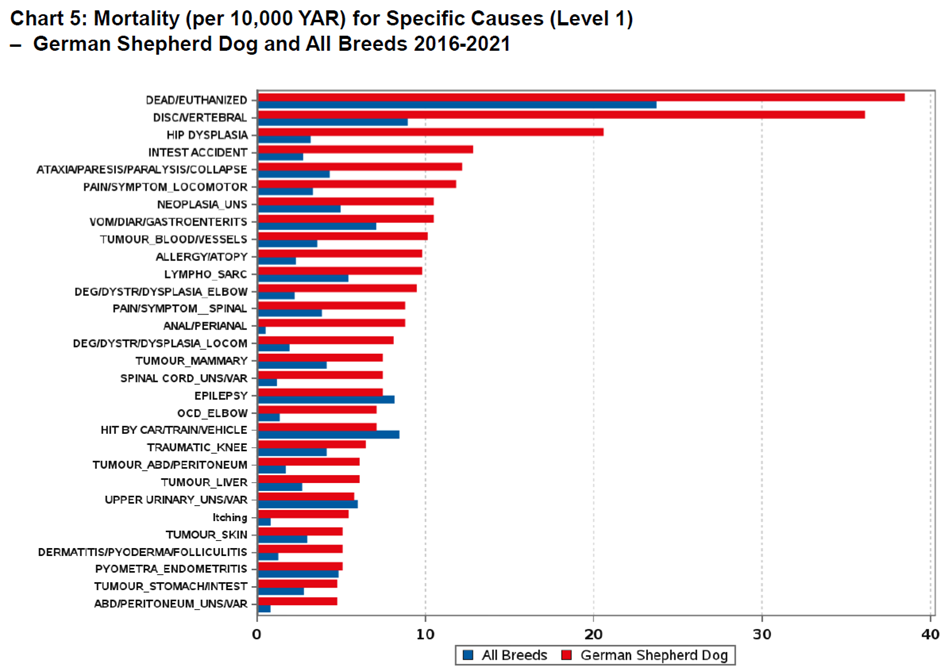
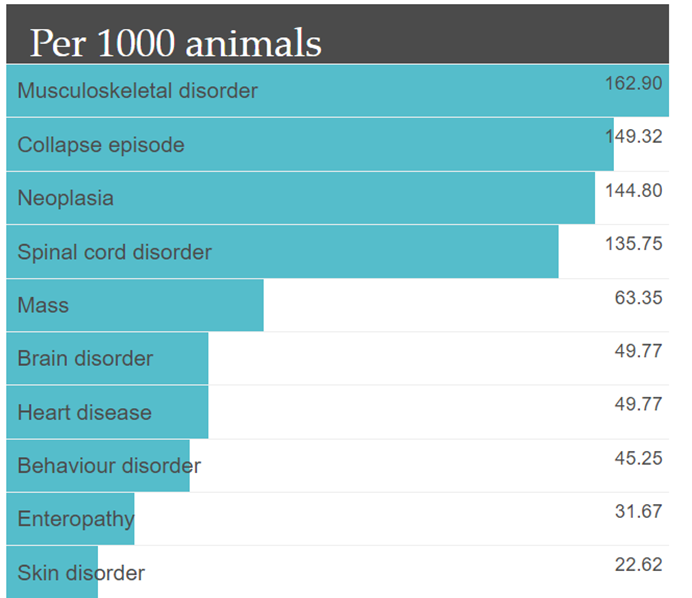
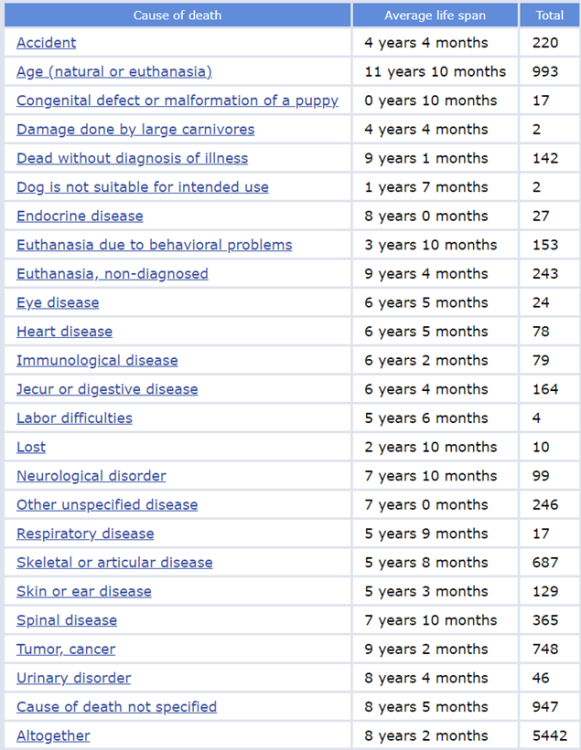


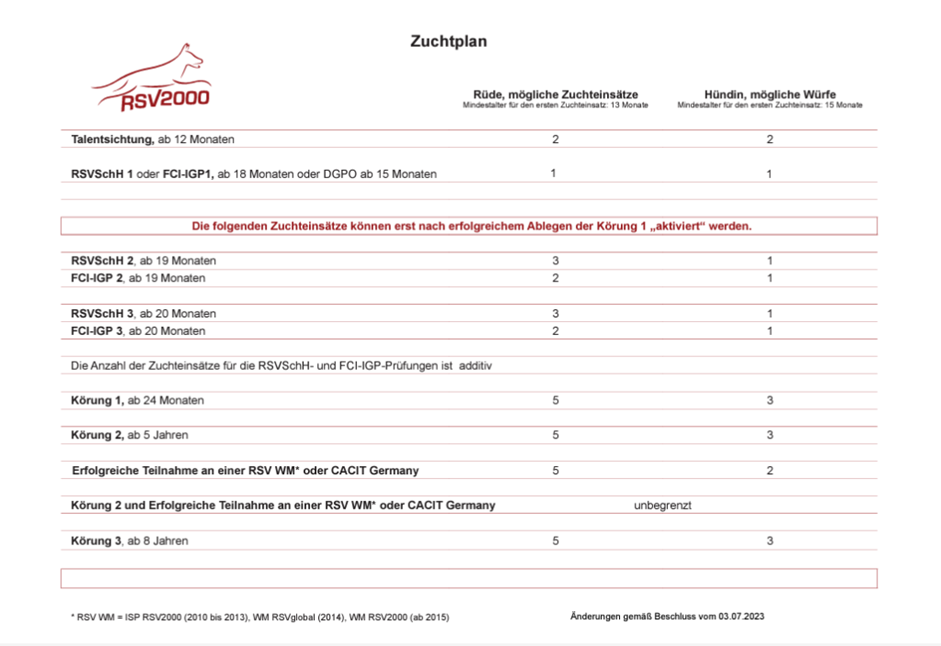
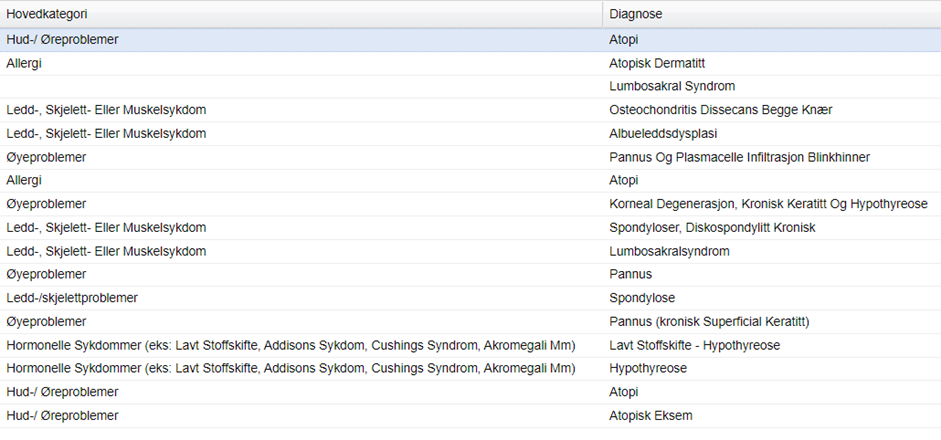

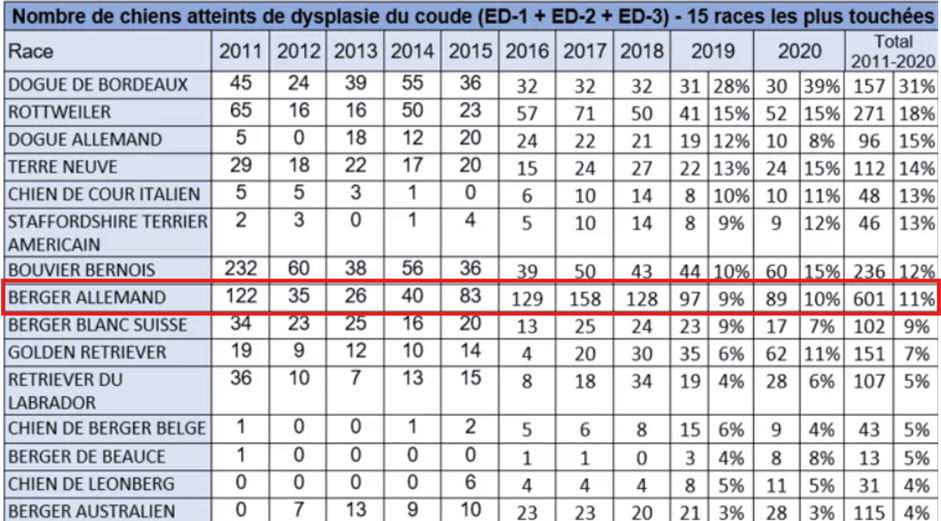
Recommended Comments
There are no comments to display.
Join the conversation
You can post now and register later. If you have an account, sign in now to post with your account.
Note: Your post will require moderator approval before it will be visible.